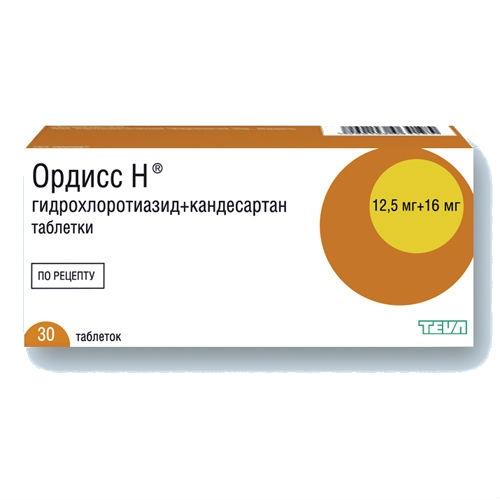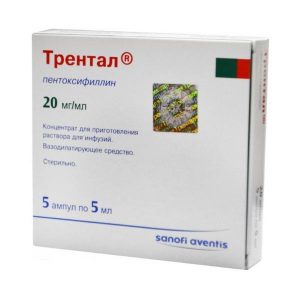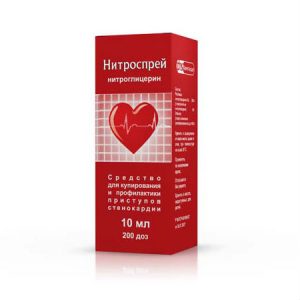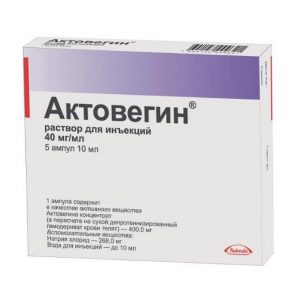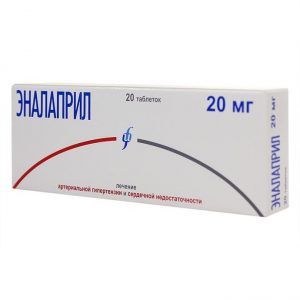Description
Release form
Tablets
Indications
– treatment of hypertension in patients who are shown combination therapy.
Contraindications
– hypersensitivity to candesartan, hydrochlorothiazide and other components of the drug
– pregnancy
– period of breastfeeding
– lactose intolerance
– gall lactase deficiency srdlkrdzlkrdzlkrdzlkrdzlkrdzlkrdzlkrdlkplozklpklpklp kidney (creatinine clearance (CC) less than 30 ml / min)
– severe hepatic impairment
– cholestasis
– persistent hypokalemia, hypocalcemia
– condition after tr kidney transplantation
– children under 18 years of age.
With caution
Concomitant use with other antihypertensive drugs, potassium-sparing diuretics, amphotericin, carbenoxolone, penicillin-sodium derivatives, salicylic acid, cardiac glycosides, antiarrhythmic drugs, non-steroidal colostrum, non-steroidal colostrum testes -adrenoblockers, anticholinergics, amantadine, cytotoxic drugs, glucocorticosteroids (GCS), adrenocortis cotropic hormone (ACTH), alcohol, barbiturates, general anesthetics, epinephrine, iodine-containing drugs, moderate liver and kidney failure.
Use during pregnancy and lactation
The drug Ordiss N is contraindicated for use during pregnancy and during breastfeeding.
Special instructions
In patients with renal failure, the use of loop diuretics is preferable to thiazide ones. For patients with renal failure during therapy with Ordiss H, it is recommended to constantly monitor the content of potassium, creatinine and uric acid.
There are no data on the use of Ordiss N in patients who have recently undergone a kidney transplant.
Drugs that affect RAAS (such as ACE inhibitors) can increase blood urea and creatinine in the serum of patients with bilateral renal artery stenosis or single kidney artery stenosis. A similar effect should be expected from angiotensin II receptor antagonists.
In patients with a deficiency of bcc and / or sodium, the development of symptomatic arterial hypotension is possible, therefore, it is not recommended to use the drug Ordiss N until these symptoms disappear.
In patients receiving angiotensin II antagonists, during anesthesia and during surgical interventions, arterial hypotension may develop as a result of RAAS blockade. Very rarely, cases of severe arterial hypotension may be observed, requiring intravenous fluid and / or vasoconstrictor administration.
Patients with impaired liver function or progressive liver disease should use thiazide diuretics with caution, as minor fluctuations in fluid volume and electrolyte composition can cause hepatic coma. Data on the use of the drug Ordiss N in patients with liver failure are absent.
Caution should be exercised when prescribing Ordiss H to patients with obstructive hypertrophic cardiomyopathy or hemodynamically significant stenosis of the aortic or mitral valve.
Patients with primary hyperaldosteronism are usually resistant to therapy with antihypertensive agents that affect RAAS, therefore, it is not recommended to prescribe Ordiss N to such patients.
As in all cases of taking drugs with a diuretic effect, plasma electrolytes should be monitored.
Thiazide-based drugs that have a diuretic effect can reduce the excretion of calcium ions in the urine and can cause spasmodic changes and a slight increase in the concentration of calcium ions in the blood plasma.
Thiazides, incl. and hydrochlorothiazide, can cause disturbances in the water-salt balance (hypercalcismia, hypokalemia, hyponatremia, hypomagnesemia and hypochloremic alkalosis).
Revealed hypercalcemia may be a sign of latent hyperthyroidism. The use of thiazide diuretics should be discontinued until the results of analyzes of the study of the parathyroid gland.
Hydrochlorothiazide dose-dependently increases the excretion of potassium, which can cause hypokalemia. A similar effect of hydrochlorothiazide is less pronounced if used in combination with candesartan. The risk of hypokalemia is increased in patients with cirrhosis of the liver, increased diuresis, taking liquid with a low salt content, undergoing parallel treatment with GCS or ACTH.
Based on the experience of using drugs that affect RAAS, the parallel use of Ordiss N and diuretic drugs that increase potassium excretion can be compensated by the use of food additives containing potassium or other drugs that can increase the level of potassium in blood plasma. The use of the drug Ordiss N can cause hypokalemia, especially in patients with heart or kidney failure (such cases have not been documented).
Thiazide diuretics increase magnesium excretion, which can cause hypomagnesemia.
The use of thiazide diuretics can change the concentration of glucose in the blood up to the manifestation of latent diabetes mellitus. A dose adjustment of hypoglycemic agents, including insulin, may be required.
Using thiazide diuretics, an increase in plasma cholesterol and triglyceride levels is associated. However, when using the drug Ordiss N, a minimal amount or absence of such effects was observed. Thiazide diuretics increase the concentration of uric acid in the blood plasma and can contribute to the occurrence of subapea in predisposed patients. Patients whose vascular tone and renal function predominantly depend on RAAS activity (for example, patients with severe chronic heart failure, kidney diseases, including renal artery stenosis), are especially sensitive to drugs acting on RAAS. The appointment of such drugs is accompanied in these patients by severe arterial hypotension, azotemia, oliguria, and less commonly, acute renal failure. The possibility of developing these effects is not excluded when using angiotensin II receptor antagonists. A sharp decrease in blood pressure in patients with ischemic cardiopathy, cerebrovascular diseases of ischemic genesis when using any anti-hypertensive drugs, can lead to the development of myocardial infarction or stroke.
Manifestation of hypersensitivity reactions to hydrochlorothiazide is most likely in patients with bronchial asthma, a history of allergic reactions, which does not exclude the appearance of allergic symptoms in other patients. When using thiazide diuretics, there have been cases of exacerbation or symptoms of congestive seborrhea.
When using thiazide diuretics, cases of worsening of systemic lupus erythematosus have been noted.
The drug contains lactose, therefore, it should not be taken by patients with rare hereditary diseases manifested in the absence of lactose tolerance, lactose deficiency or impaired glucose and lactose absorption. Use in pediatrics
Safety and effectiveness of the use of the drug Ordiss N in children and adolescents under the age of 18 have not been established.
Influence on the ability to drive vehicles and control mechanisms
In case of adverse effects of the central nervous system during therapy with Ordiss H, caution should be exercised when performing actions requiring increased concentration of attention and speed of psychomotor reactions.
Composition
1 tablet contains:
active substance: candesartan cilexetil 8.0 mg / 16.0 mg / 32.0 mg
excipients: pregelatinized starch 3.75 mg / 7.5 mg / 15.0 mg poloxamer 188 0.5 mg / 1, 0 mg / 2.0 mg povidone-KZO 4.0 mg / 8.0 mg / 16.0 mg dye iron oxide red (E172) 0.075 mg / 0.15 mg / 0.3 mg calcium carmellose 1.65 mg / 3.3 mg / 6.6 mg microcrystalline cellulose 17.5 mg / 35.0 mg / 70.0 mg lactose monohydrate 43.725 mg / 87.45 mg / 174.9 mg magnesium stearate 0.8 mg / 1.6 mg / 3.2 mg.
Dosage and administration
Inside, regardless of food intake. The recommended dose is 1 tablet 1 time per day. Titration of a dose of candesartan is recommended before transferring the patient to therapy with Ordiss N. If necessary, patients are transferred from candesartan ion therapy to Ordiss N. therapy. The main antihypertensive effect is achieved, as a rule, in the first 4 weeks after the start of treatment.
In patients with impaired renal function, loop diuretics are preferred over thiazide ones. Prior to initiation of therapy with Ordiss N in patients with mild or moderate impaired renal function (CC more than 30 ml / min), including patients on hemodialysis, titration of a dose of candesartan is recommended. starting at 4 mg.
Ordiss N is contraindicated in patients with severe renal failure (CC less than 30 ml / min).
For patients at risk of arterial hypotension (for example, with reduced circulating blood volume (BCC)), titration of a dose of candesartan starting at 4 mg is recommended.
In patients with moderate liver dysfunction, titration of a dose of candesartan starting at 2 mg is recommended prior to initiation of therapy with Ordiss II. For patients with severe liver dysfunction, the use of the drug Ordiss N is contraindicated.
In elderly patients, dose adjustment is not required.
Side effects
The incidence of side effects is classified according to the recommendations of the World Health Organization: very often – at least 10% often – at least 1%, but less than 10% infrequently – at least 0.1%, but less than 1% rarely – not less than 0.01%, but less than 0.1% very rarely (including isolated cases) – less than 0.01%.
Candesartan
From the blood system: very rarely – leukopenia, neutropenia, agranulocytosis.
From the side of metabolism and nutrition: very rarely – hyperkalemia, hyponatremia.
From the central nervous system (CNS): often – dizziness is very rare – headache.
From the gastrointestinal tract: very rarely – nausea.
From the liver and biliary tract: very rarely – increased activity of liver transaminases, impaired liver function, hepatitis.
From the side of the skin and subcutaneous tissues: very rarely – rash, skin itching, urticaria, angioedema.
From the side of the musculoskeletal system and connective tissue: very rarely – back pain, arthralgia, myalgia.
From the side of the kidneys and urinary tract: very rarely – renal failure.
Hydrochlorothiazide
From the blood system: rarely – leukopenia, neutropenia, agranulocytosis, thrombocytopenia, aplastic anemia, inhibition of bone marrow function, hemolytic anemia.
From the side of the immune system: rarely – anaphylactic reaction.
From the side of metabolism and nutrition: often – hyperglycemia, hyperuricemia, hyponatremia, hypokalemia.
From the side of the central nervous system: often – dizziness, rarely vergigo – sleep disturbances, anxiety, depression, paresthesia.
From the side of the organ of vision: rarely – decreased clarity of vision.
From the cardiovascular system: infrequently – postural hypotension rarely arrhythmia, vasculitis.
From the respiratory system, chest and mediastinal organs: rarely, respiratory distress syndrome, pneumonitis, pulmonary edema.
From the gastrointestinal tract: infrequently – anorexia, loss of appetite, constipation, diarrhea, irritation of the gastric mucosa rarely – pancreatitis.
From the liver and biliary tract: rarely – intrahepatic cholestatic jaundice.
From the skin and subcutaneous tissues: infrequently – rash, urticaria, photosensitivity reaction rarely – toxic epidermal necrolysis, erythematous reactions, recurrence of cutaneous erythematosis.
From the side of the musculoskeletal system and connective tissue: rarely – muscle spasm.
From the kidneys and urinary tract: often – glucosuria rarely – impaired renal function, interstitial nephritis.
Other: often – weakness, increased concentration of cholesterol, triglycerides in blood plasma rarely – fever, increased concentration of creatinine, urea in blood plasma.
Drug Interactions
In pharmacokinetic studies, the simultaneous use of candesartan / hydrochlorothiazide with hydrochlorothiazide, warfarin, digoxin, oral contraceptives (ethinyl estradiol / levonorgestrel), nibifliplinamide was studied. No clinically significant drug interactions have been identified.
Candesartan is metabolized in the liver to a small extent with the participation of the CYP2C9 isoenzyme. Conducted studies on the interaction did not reveal the effect of the drug on CYP2C9 and CYP3A4, the effect on other isoenzymes of the cytochrome P450 system has not been studied.
The simultaneous use of candesartan / hydrochlorothiazide with other antihypertensive agents enhances the hypotensive effect.
The action of hydrochlorothiazide, leading to potassium loss, may be enhanced by other means leading to potassium loss and hypokalemia (e.g. diuretics, laxatives, amphotericin, carbenoxolone, penicillin G sodium, salicylic acid derivatives).
Experience with other drugs acting on the RAAS. shows that concomitant therapy with potassium-sparing diuretics, potassium preparations, salt substitutes containing potassium, and other means that increase serum potassium (for example, heparin), can lead to the development of hyperkalemia.
Hypokalemia and hypomagnesemia, caused by taking diuretic drugs, predispose to the development of the cardiotoxic effect of cardiac glycosides and antiarrhythmic drugs. When taking candesartan / hydrochlorothiazide in parallel with such drugs, control of potassium in the blood is required.
With the simultaneous use of lithium preparations with ACE inhibitors, a reversible increase in serum lithium concentration and the development of toxic reactions occur. Similar reactions can occur when using angiotensin II receptor antagonists, and therefore it is recommended to control the serum lithium content.
The diuretic, natriuretic and hypotensive effects of hydrochlorothiazide are weakened with the simultaneous use of NSAIDs.
Absorption of hydrochlorothiazide is weakened by the use of colestipol, colestyramine.
The action of non-depolarizing muscle relaxants (e.g. tubocurarine) can be enhanced by hydrochlorothiazide.
Thiazide diuretics can cause an increase in calcium in plasma due to a decrease in its excretion. If you need to use calcium-containing food additives or vitamin D, you should control the calcium content in the blood plasma and, if necessary, adjust the dose. Thiazide-like diuretics enhance the hyperglycemic effect of beta-blockers and diazoxide.
Anticholinergics (e.g., atropine, biperidine) may increase the bioavailability of thiazide diuretics due to decreased gastrointestinal motility. Thiazide-like diuretics may increase the risk of adverse effects of amantadine.
Thiazide-like diuretics can slow the elimination of cytotoxic drugs (such as cyclophosphamide, methotrexate) from the body and enhance their myeloid suppressing effect.
The risk of hypokalemia may increase with concomitant use of corticosteroids or ACTH.
With the use of Ordiss H, the incidence of orthostatic arterial hypotension may increase with alcohol, barbiturates, or general anesthetics.
In the treatment of thiazide diuretics, a decrease in glucose tolerance is possible, and therefore a dose of hypoglycemic drugs (including insulin) may need to be selected.
Hydrochlorothiazide may decrease the effect of vasoconstrictor amines (eg, epinephrine).
hydrochlorothiazide may increase the risk of developing acute renal failure, especially in combination with large doses of iodinated filler.
No significant interaction of hydrochlorothiazide with food was detected.
Overdose
Symptoms: an analysis of the pharmacological properties of the drug suggests that the main manifestation of an overdose may be a clinically pronounced decrease in blood pressure, dizziness. Individual cases of drug overdose (up to 672 mg of candesartan) have been described, ending in patients recovering without serious consequences. The main manifestation of an overdose of hydrochlorothiazide is an acute loss of fluid and electrolytes. Symptoms such as dizziness, decreased blood pressure were also observed. dry mouth, tachycardia, ventricular arrhythmia, loss of consciousness and muscle cramps.
Treatment: with the development of a clinically pronounced decrease in blood pressure, symptomatic treatment is necessary and the patient’s condition should be monitored. Lay the patient on his back and raise his legs. If necessary, bcc should be increased, for example, by intravenous administration of isotonic sodium chloride solutions. If necessary, sympathomimetic agents may be prescribed. Withdrawal of candesartan and hydrochlorothiazide by hemodialysis is unlikely.
Storage Conditions
Do not store above 25 ° C. Keep out of reach of children.
Term hodnosty
2 years
Active ingredient
hydrochlorothiazide, candesartan
lekarstvennaja form
tablets
Teva Pharmaceutical Enterprise Co., Ltd., Israel
